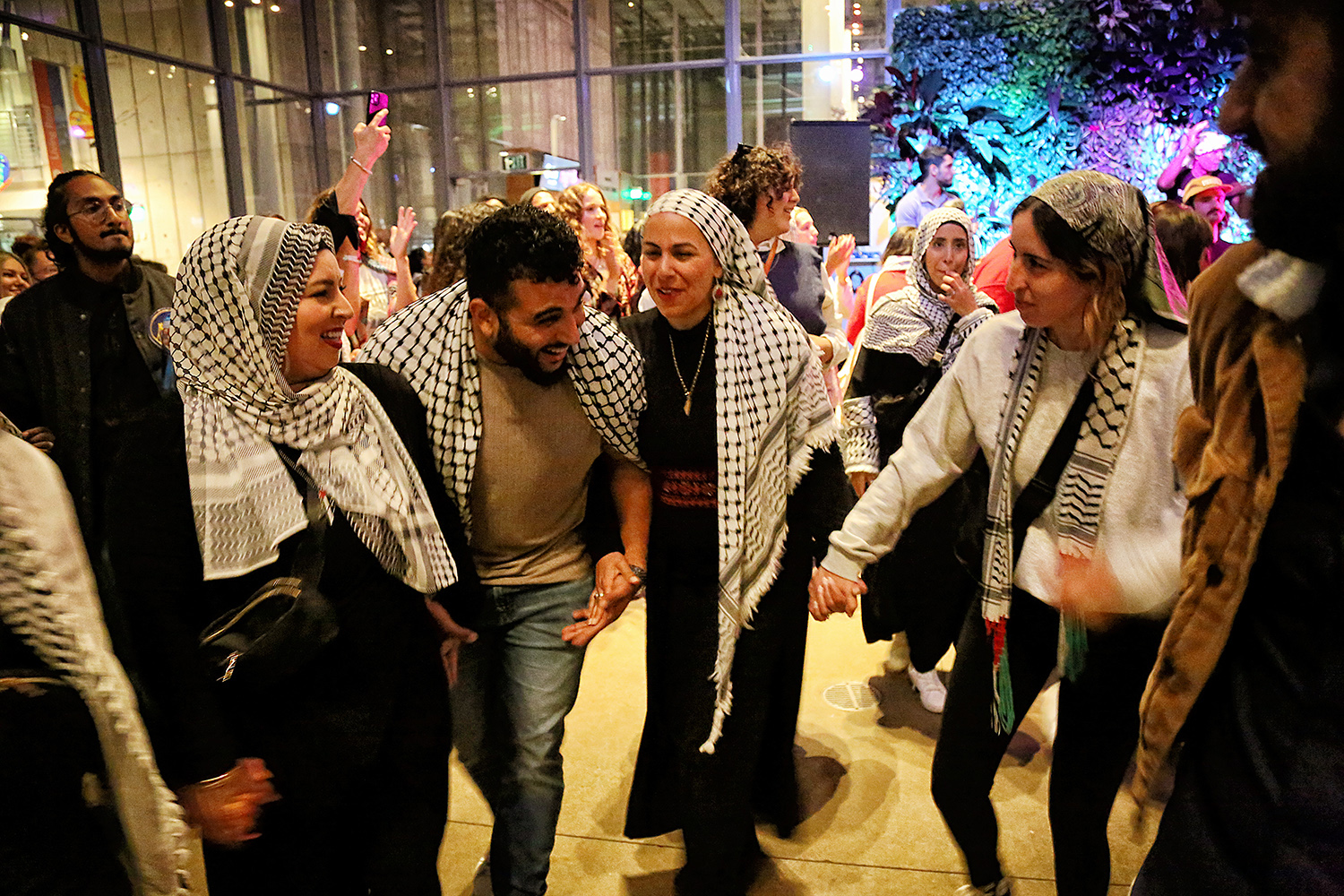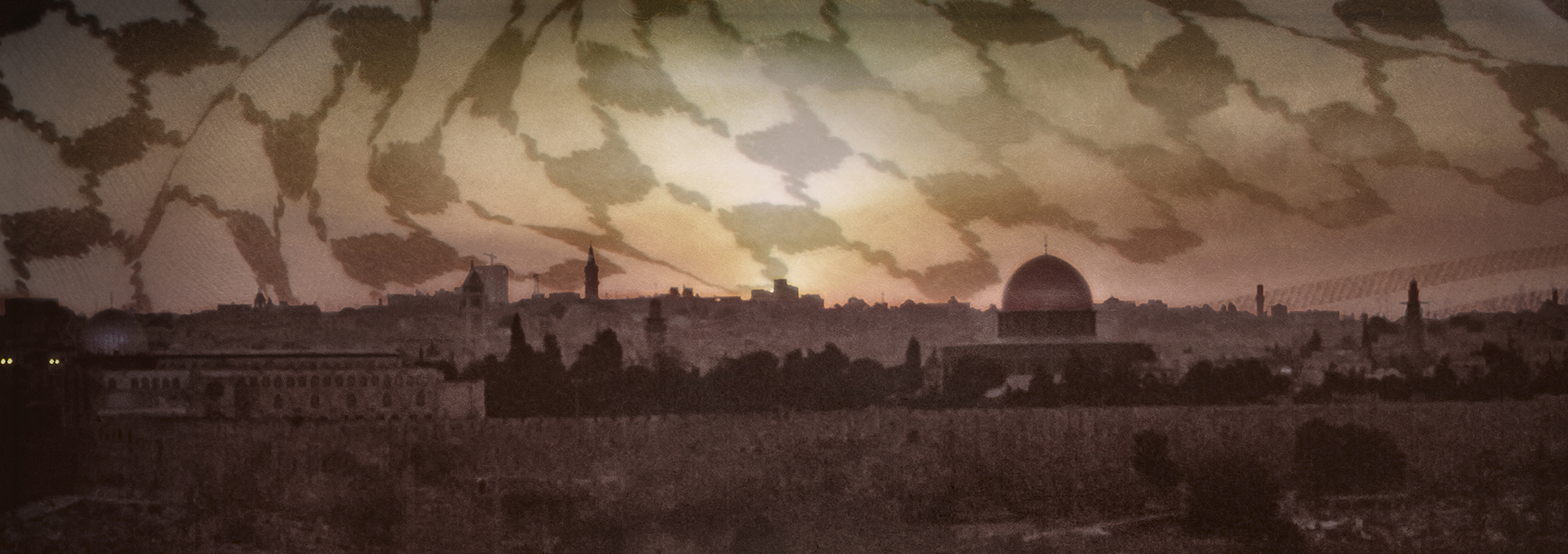
The ancient drum beats of Palestinian folk music blared at the California Academy of Sciences in San Francisco on a recent Thursday evening. Against a backdrop of a T-Rex skeleton, a hall of joyful people danced the dabke, and Najib Joe Hakim experienced a hint of hopefulness for the first time since October last year.
Hakim is an award-winning Palestinian American documentary photographer, artist and activist based in San Francisco. His work primarily focuses on social justice. But on special occasions, he takes on fun assignments like documenting Cal Academy’s Nightlife: Falastin, an event celebrating Palestinian culture last month.

“When I was there, I felt right. I felt happy. I felt the energy of life again,” Hakim says. “People would be joyful and appreciative of being together despite the elephant in the room.”
That elephant is Israel’s military campaign in Gaza, which according to its health officials has killed over 41,800 people, mostly civilians, since Oct. 7, 2023. On that day, Hamas’ attack on Israel left about 1,200 people dead, according to the Israeli government. (The medical journal The Lancet estimates that there could be as many as 186,000 deaths in Gaza because of famine, communicable diseases and other consequences of the bombardment.)
The war has taken the lives of fellow artists Hakim knows and loves.



